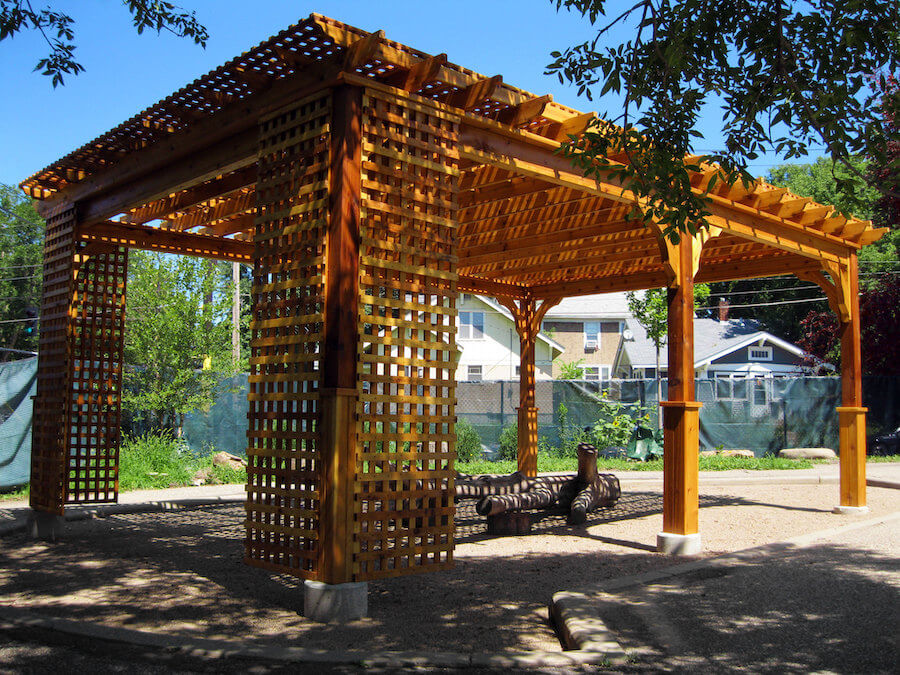Besides its design, size, and build quality, a pergola’s material is vital to its longevity and appearance.
The natural woods possess a vintage natural look, but they will surely hurt your pocket. Meanwhile, modern materials are more cost-friendly and bring a sleek appearance.
You need to pick an efficient material that suits the surrounding conditions and increases the pergola’s durability. So, what is the best material to use to build a pergola? The answer will be revealed in this post.
Table of Contents
What Is The Best Material To Use To Build A Pergola?
The two best materials for building a pergola are aluminum and wood, which have excellent durability and a beautiful appearance. If you prefer wood, prioritize pressure-treated wood, vinyl, or Cedar.
Choosing a material for your pergola is more challenging than many people think. You have to achieve a balance between utility, appearance, and budget. , but there’s no material that can maximize all these qualities.
The key is to pick a material that well suits the surrounding landscapes and constructions in your house. Nowadays, construction materials have become much more affordable than in the past.
You can easily customize their shape to efficiently suit your pergola’s design. Therefore, a beautiful and harmonious appearance should be prioritized when picking a pergola’s material.
So, what are the best materials used for building a pergola? Let me walk you through excellent examples and their core qualities to help ease your decision.
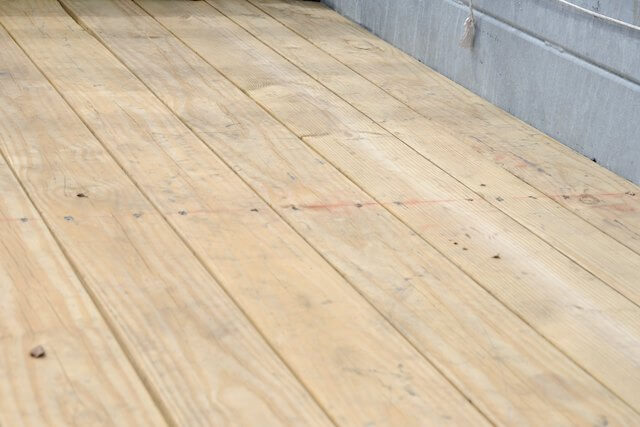
Wood
Wood is the most traditional and prevalent pergola material, which has been used throughout history. It can deliver both a rustic natural look and a beautiful modern appearance, depending on the wood type you choose.
However, you should always choose high-quality and premium wood materials to cope with environmental elements like rain or sunlight. Low-quality woods will slowly rot and wear down in the long run.
Among the wood types, pressure-treated wood is getting more prevalent these days. It features a sleek and beautiful design, plus excellent durability and water-resistant capacity.
Pressure-treated wood is much more affordable and easier to customize than natural hardwoods. Therefore, it’s an ideal choice if you want to maximize the value for money.
On the other hand, the fantastic qualities of PT wood don’t make hardwood a bad choice, either. Their advantage lies in the sturdier structure and more reliable durability.
If you regularly throw small parties or live in areas with harsh year-round conditions, hardwood is the way to go. Furthermore, its rustic and natural design can fit many households with a vintage design and wooden furniture.
The most significant compromise is their high price and low accessibility. The premium wood types like red Cedar are not always in supply, and you’ll have to pay many times higher costs than the other artificial materials.
Pros
- Possess excellent durability.
- Its surface can be stained or painted.
- Pressure-treated wood is affordable and easy to customize.
- Offer a vintage look that can combine with wooden furniture.
Cons
- Wood is prone to insects, cracking, and moisture.
- Natural hardwood has a high price.
- Wood doesn’t last as long as other artificial materials.
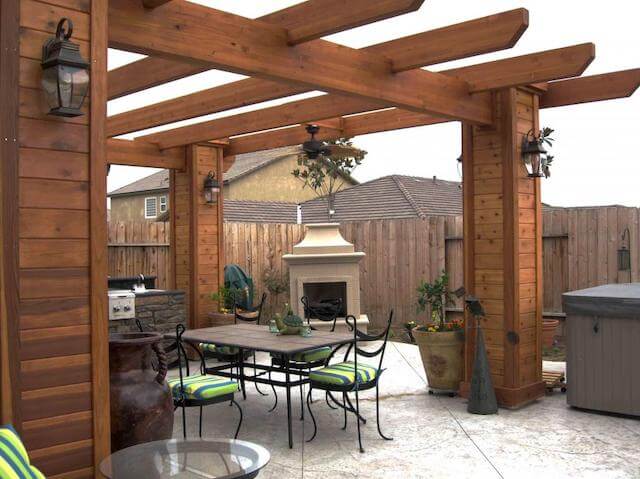
Vinyl
Vinyl is one of the most durable and prevalent plastic materials used for building standard houses and high-quality constructions. If you want a more affordable and common material than wood, go for vinyl.
The stylish and clean appearance of vinyl makes it an excellent choice for an aesthetic and modern house. A vinyl pergola can become the center of your backyard with its beautiful look.
Vinyl is also durable and can last very long without needing to be maintained regularly. It is immune to nearly all weather elements and environmental factors like rain, water, and harsh temperatures.
The setback of vinyl lies in its limited customization ability. You cannot paint or stain the vinyl pergola easily, while the original colors of this material are not extensive.
Pros
- Excellent durability.
- Easy to install and customize.
- Doesn’t need regular maintenance.
Cons
- Limited color options.
Aluminum
Nothing gives you more peace of mind than a metal pergola frame. The durability of aluminum is indispensable, which can withstand strong impacts and insects very well.
Aluminum also possesses a clean and modern look that can fit well into any modern housing construction. For this reason, it’s commonly used for attached pergolas rather than free-standing constructions in backyards.
Pros
- It can last for a lifetime.
- A modern and clean look.
- Suitable for modern houses.
- Doesn’t require regular maintenance or cleaning.
Cons
- High price.
- Doesn’t fit wooden furniture very well.
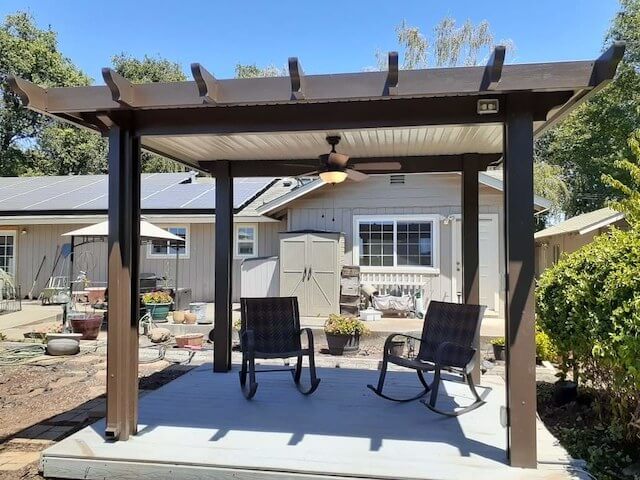
Fiberglass
The advantages of fiberglass lie in its resilience and incredible durability.
The price of fiberglass falls into the medium range, but its quality and beautiful appearance should not be underrated.
Another thing I love about fiberglass is its lightweight characteristic. Therefore, you don’t need to construct as many support beams and posts as the traditional wooden pergolas.
Pros
- Medium to low price.
- Doesn’t require regular maintenance.
- Incredibly lightweight and durable.
- Convenient to install and construct.
Cons
- Limited customization ability.
- It’s not the best match for houses with many natural landscapes.
How To Build A Pergola?
Building a pergola on your own might be challenging if you don’t have many building skills and experience. Therefore, it’s best to hire professionals to ensure the pergola’s durability and beauty.
If you still want to construct your own pergola, here are some overview steps and tips to help you.
Preparations
You should prepare to Galvanize drive screws (5 inches) and bolts (8 inches) in large quantities, plus the nuts, ladder, and colored spray paint. The pergola consists of the main components of four posts, boards (14), and four bracings.
In addition, the needed tools for constructing a pergola are a circular saw, jigsaw, level, hammer, and drill. All these tools can be found in a standard building tool kit at the stores.
Step-By-Step Instructions
Step 1: Pick a flat area in your garden where you want to place the pergola. Remove the soil and ensure there’s enough available space around.
Step 2: The next step is setting the pergola’s posts. I advise you to paint the pergola design on the ground first to locate the posts’ positions before you proceed.
Then, dig holes in these spots (about 9 inches deep) and stabilize the posts in the holes. Don’t forget to recheck the post’s position one more time to ensure that they lie diagonally.
Step 3: The next step is installing two support beams on the two ends of your pergola before putting the rafters on them. Use the circular saw to cut four support beams and nine rafters to your desired size.
Step 4: Before putting on the beams and rafters, recheck and use a circular saw to ensure all four posts are equally leveled. Use nuts and drills to secure the beams and rafters in place before finishing your pergola.
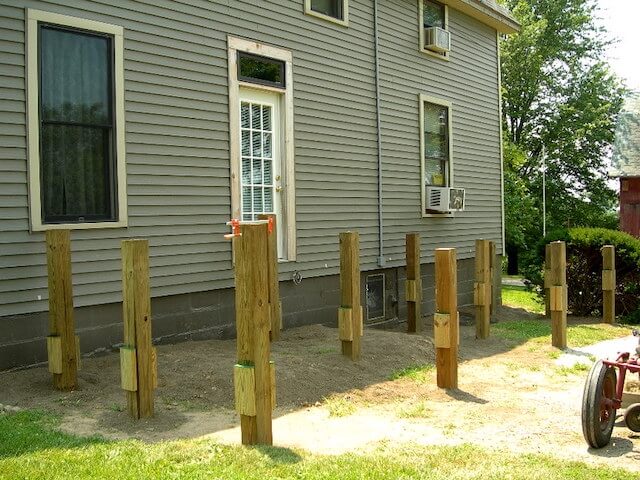
How To Maintain A Pergola?
Maintaining a pergola is essential in keeping its beautiful appearance and durability, especially for wooden constructions. Pergola maintenance involves simple methods like trimming, washing, and staining.
Washing
You can use a cleaner to remove the stains and mildew on the pergola’s surface one or two times a month. After removing the stains, clean the pergola with a mixture of soap and clean water.
Trimming
Wooden pergolas usually have vines running across their surface. These parts will grow larger over time and add more weight to your pergola. Therefore, you should remove and trim the vines to eliminate this excessive weight.
Staining
A staining coat on the outside will protect the pergola’s surface better from environmental effects in the long run. Therefore, you should consult professionals and have your pergola stained every few years.
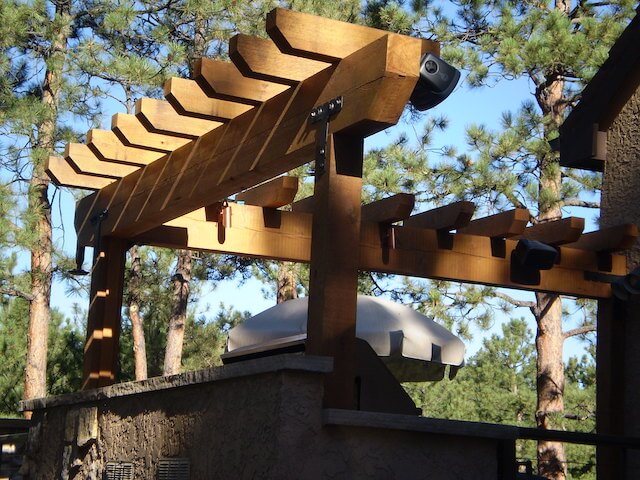
FAQs
Which Pergola Material Is Best?
Natural hardwood and pressure-treated wood are the best options if you prefer a vintage and rustic look. If you want to maximize durability and love a modern design, choose vinyl, aluminum, or glass for your pergola.
What Type Of Wood Is Best For A Pergola?
Among the standard wood types, pressure-treated woods are one of the best choices for a pergola. It can resist all environmental elements and give your pergola a beautiful appearance.
In addition, PT woods are more affordable and accessible to customize than other natural hardwoods.
What Material Do I Need To Build A Pergola?
Different pergola components, like rafters, beams, or columns, are made from various materials. A standard pergola may consist of wood, vinyl, glass, and aluminum in its structure.
Should I Use Pressure-Treated Wood For A Pergola?
Yes, pressure-treated wood possesses excellent durability and resistant capacity to harsh temperatures, sunlight, and moisture. These characteristics are vital for outdoor construction, making PT wood an ideal material for pergolas.
Final Thoughts
The best materials for building a pergola are pressure-treated wood and vinyl, which is very durable and prevalent. If you want a more stylish and modern pergola, choose aluminum or glass.
The most critical thing is that your pergola must combine well with the surrounding landscapes and furniture. If you prefer a vintage pergola to store wooden furniture, wood is the right choice to go.
I hope the information provided can help you pick your favorite pergola material and make a better plan for your construction. Thank you for reading!

